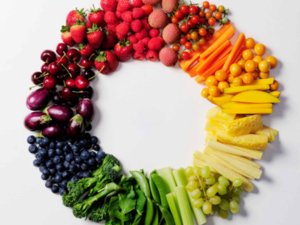By Consultant Nutritionist and Dietitian Dharini Krishnan
The right food is something which is individualistic. A general instruction is that a sumptuous helping of protein is needed for the body to handle its physiological functions. But if this is the advice that I am going to give to a patient who has a chronic kidney failure, it may not be the right food for him. Foods can be deemed right and healthy when it comes to discussing good health in general.
Right food vs Wrong Food
Wrong Foods
Foods which are rich in calories where most calories come from carbohydrates or fat are classified as wrong foods. They are wrong because they just provide calories. Calories are needed for energy, but the body needs so many other nutrients to function properly.
These foods lack essential nutrients such as vitamins and minerals. Vitamins are needed to perform important biological functions and some of them may not be produced by the body. Minerals are also needed for the vital functions of the body. For example, calcium is needed for bone growth, maintenance and repair to ensure a healthy body.
Iron is needed for blood which is the transporter of nutrients. If the red blood cells have less of iron they will not be able to transport enough oxygen, which is the vital force of the body. Calorie dense foods usually lack in fibre. Fibre is an essential part of the diet which prevents constipation, as well as major diseases such as Colon cancer, Diabetes, Cardiac problems, etc.
Foods rich in calories are classified as junk foods. Example: pastries, puffs, pizzas, burgers, fried foods, etc.

Also read: All about the goodness of almonds
Right Foods
Foods with life in them or living foods, that are healthy are called right foods. Foods which are rich in vegetables, fresh fruits, etc. Protein rich foods in moderation (Dhals, whole pulses, milk and milk products (except butter and ghee)) should be used in the daily choice of foods. A simple rule of the thumb is to follow a rainbow diet. The rainbow has seven colours. Try to incorporate as many colours in your diet by the choice of vegetables and fruits of different kinds.
Rainbow Diet

Pic courtesy: FoodPlease.com
- Violet/Blue/Indigo: This range of colours are found in brinjals, grapes, jamboo fruits (Naaga Pazham)
- Green: Green leafy vegetables (keerai). Beans varieties-Broad beans (avaraikkai), String beans (karamani), French beans (beans). Gourds: Snake Gourd (Pudalangai), Ridge Gourd ( Peerkangai), Bottle Gourd ( Soraikkai), Ash Gourd (Pooshanikkai), Bitter Gord (Pavakkai).
- Yellow: Papayaa
- Orange: Carrot, Pumpkin, Double Beans, Orange fruit.
- Red: Tinda, Red Carrots, Rajma Beans, Red Plantain, Banana Flowers.
Make sure that your diet contains Green, Yellow, Orange and red every day. Violet or indigo or blue once a week.
Also read: Essential Food Groups
Remember:
- Make sure that the above foods make up half of your plate.
- A quarter should be filled with rice or (wheat products).
- A quarter should be filled with pulses (or non-vegetarian foods) and milk products.
- Use steamed products more often (Idli, Idiappam, puttu)
- Use boiling, steaming or poaching as the method of cooking.
- Use oil and other visible fats sparingly.
Why are foods classified as right and wrong?
The more you eat the healthy, right foods the better is going to be your health- A better quality of life.
Wrong foods combined with the lack of exercise can be the best recipe for sickness.
Also read: All about the goodness of tender coconut
Healthy foods:
Fresh fruits and vegetable Adults
High Protein foods Children and Adolescents, Pregnant Women
Calcium and Iron rich foods Children and Adolescents, Pregnant Women
High Fibre foods Diabetics, Obese and High Cholesterol patients
Extra Energy Foods Athletes
Pic courtesy: Atlantabread.com
